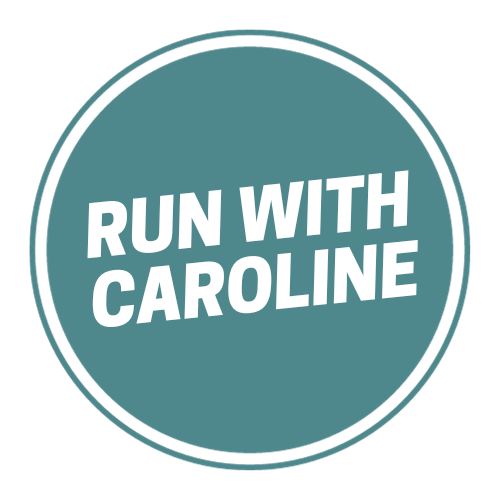Running forms drills are great for improving your speed and endurance as a runner.
They strengthen key running muscles, and improve coordination, balance and agility.
If you’ve never done running form drills before, you may be wondering what they are.
The good news is there are plenty of running form drills for beginners to get you started.
In this guide, I’ll share information on why running form drills are so important and some sample running form drills for beginners.
In this guide we’ll explore:
- What are running form drills?
- What are the benefits of completing running form drills?
- Who should do running form drills?
- When to do running form drills
- Where to complete running form drills
- Types of running form drills to do
- 7 essential running form drills to improve speed and endurance
Ready?
Let’s get started!
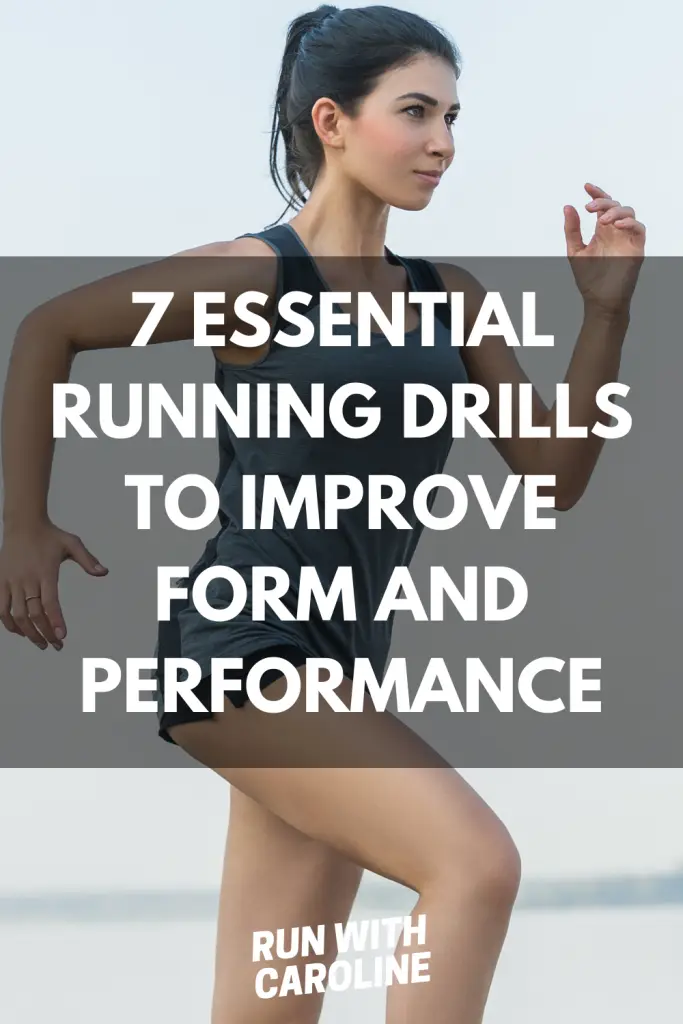
What are running form drills?
You can think of running form drills as ‘technical work’.
They are essentially dynamic exercises that focus on running form and technique and help you develop the technical skills and proper movement patterns needed for running.
You may be more familiar with running drills if you are part of an athletics or running club.
Many running coaches like to do them with their athletes to help them improve running form and technique and develop technical skills like the ones described above.
These all come together to make you a better athlete!
Related: The 9 best pre-run stretches (and how to do them properly)
What are the benefits of completing running form drills?
There are many benefits to completing running form drills.
Running form drills help to:
- Improve running form and technique
- Improve running economy
- Improve the strength of your muscles and joints
- Reduce the risk of injury
- Make you a stronger and faster runner
- Improve speed and endurance
However, a word of caution, a 2015 study concluded that running drills and technique work alone is not the only way to improve running efficiency.
A runner must spend time on simply running in order to adopt the most efficient way to run based on their biomechanics.
Related: 4 simple tips to improve running form
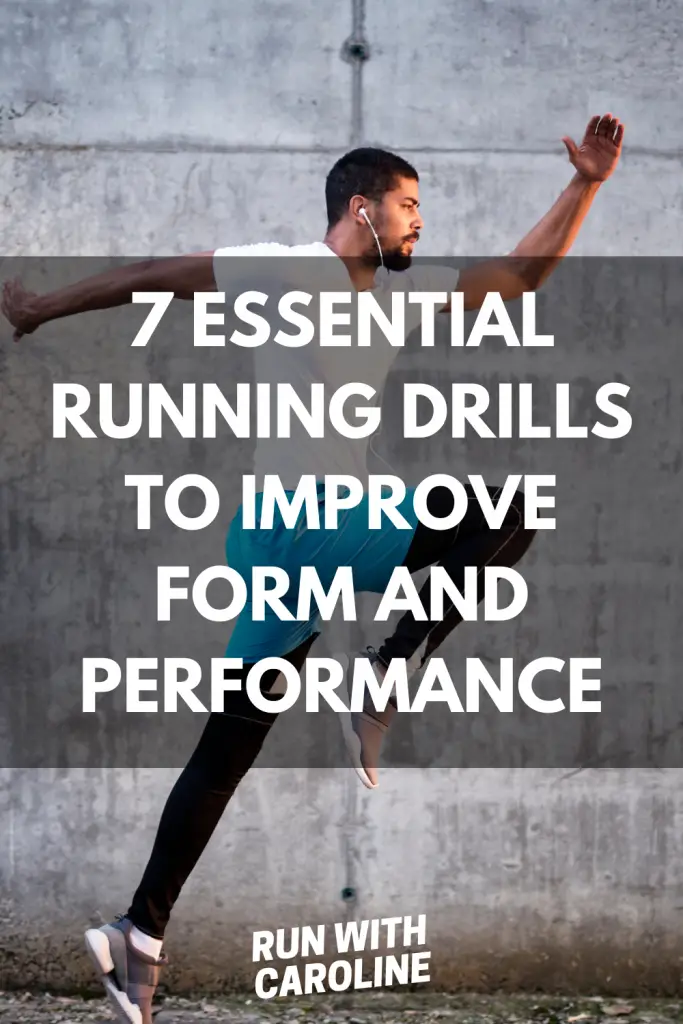
Who should do running form drills?
The beauty of running drills is that they’re suitable for all types of runners – from beginners to advanced runners alike!
No matter your running experience and fitness levels, you can benefit from doing some form of running drill to reinforce proper running form and improve athletic performance.
Just like strength training, running drills are recommended for all runners.
However, if you have an injury or you are returning to running following an injury, be careful when completing running drills.
They often involve high impact forces which could make an injury worse or predispose you to reinjuring yourself.
If you ever feel pain when completing running drills, take this as a sign to stop.
Related: The ultimate head to toe guide to proper running form and technique
When to do running form drills
Running drills are often done as part of a dynamic warm up before a run, race or hard speed workout.
However, you can also do them as a part of a standalone session in which you focus on one or two technical skills.
If you are doing them as part of a standalone session, make sure you do a proper warm up before completing any drills.
Aim to do running drills at least twice a week in order to reap the benefits.
As with most things running-related, the more consistent you are, the better the results will be.
Related: The ultimate 30 day strength training plan for runners
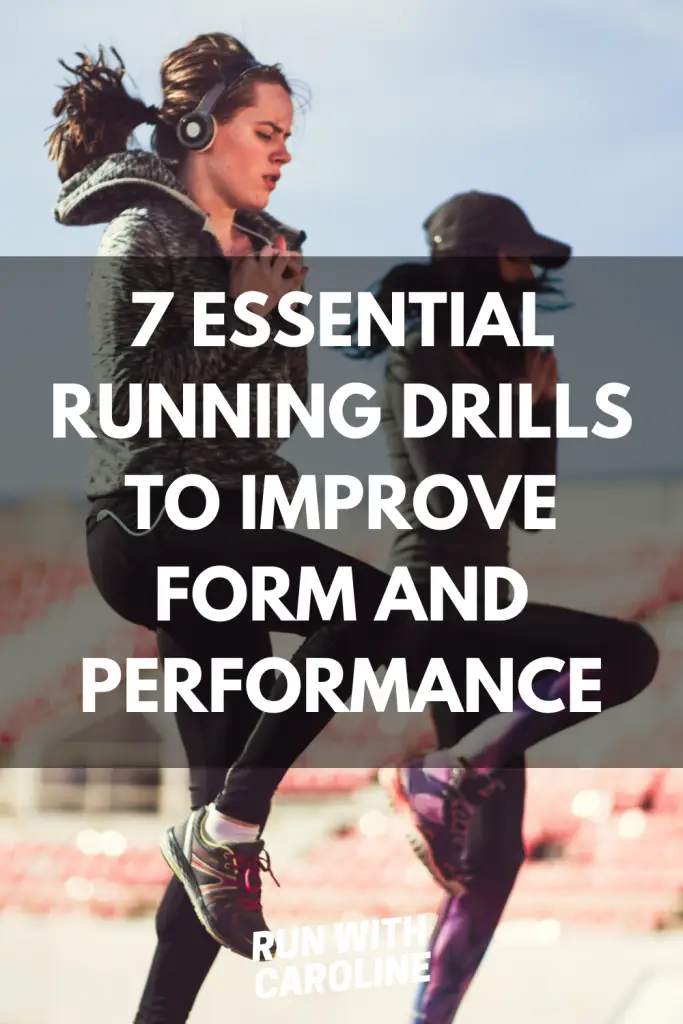
Where to complete running form drills
You can do running drills almost anywhere you feel comfortable.
Just make sure you have a large enough space (about 50m) in which to complete them.
Roads, outdoor running tracks, grass – these are all good surfaces on which to complete running drills.
If you are recovering from an injury, stick to softer surfaces like grass as a hard surface like concrete or asphalt may be too high impact.
Related: 7 of the best glute strength exercises for runners
Types of running form drills to do
When considering which running drills to do, make sure these align with your specific goals and needs.
For example, if you struggle to lift your knees during a speed session, focus on running drills like high knees and carioca that get you into the habit of lifting your knees.
Likewise, if you suffer with lazy glutes, running drills that target and activate the glutes like A-skips and straight-leg bounds will be beneficial for you to complete before a run.
Yes, you can choose to complete a variety of running drills.
However, they are much more effective when used to address certain movements or skills that you’d like to improve or work on.
Related: How to use negative splits to race faster (and happier)
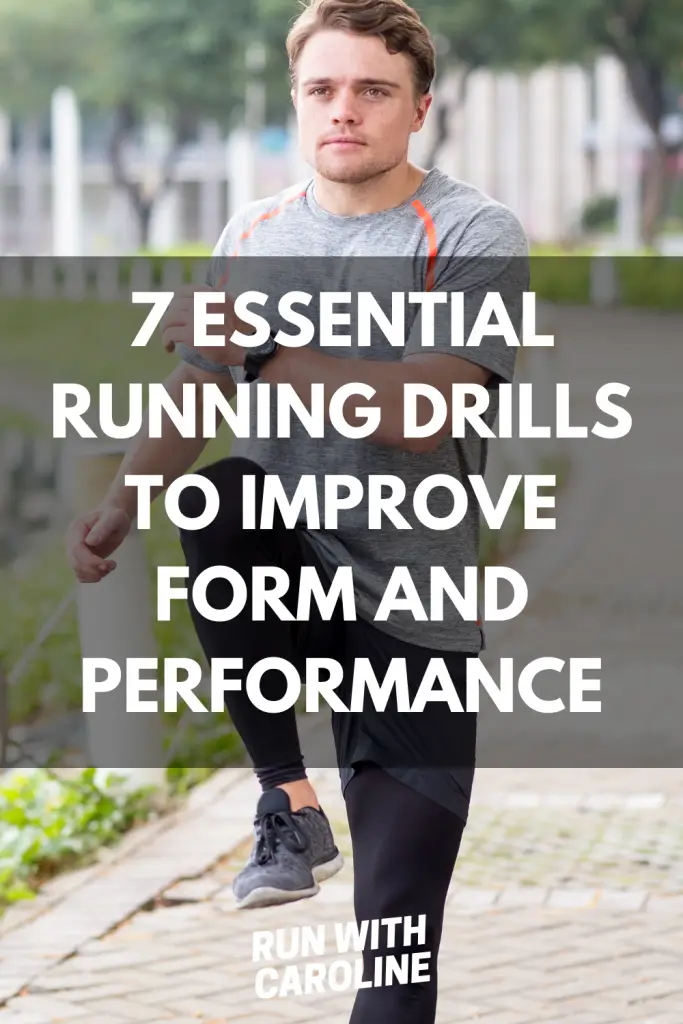
7 essential running forms drills for beginners to improve speed and endurance
Before delving into running form drills, here are some tips and advice on completing each drill.
- You will need between 30 to 50m to complete each drill
- Walk back to where you started before beginning the next drill
- Perform 2 to 3 sets of each drill before beginning the next one
- Pick the drills that you think will be beneficial for you depending on how you’re feeling and the type of session you are about to complete. You don’t need to perform every single drill each time.
- Always prioritise proper running form and posture over speed and power. There’s no use doing running drills if your form is all over the place.
#1 Butt kicks
- Draw your heel up in a straight line towards the bottom of your butt or top of the hamstrings.
- Allow the knee to come forward, but not quite as high as the high knees drill.
- Try not to swing the heel in a half circle towards the butt.
Here are the benefits of the butt kicks running drill:
- Increases the speed of the hamstring when it contracts, which can help you run faster.
- Works the hamstrings, glutes and quads which are all power muscles when it comes to running.
- Reinforces high cadence.
- Improves hip flexor flexibility and mobility.
#2 High knees
This is a great all round running drill, perfect for tempo runs or longer speed endurance sessions.
As such it is one of the best running drills for endurance.
- Stand with your feet hip-width apart.
- Lift your left knee to your chest and then switch to lift your right knee to your chest.
- Continue the movement, alternating legs and moving at a sprinting or running pace.
Here are the benefits of the high knees running drill:
- Cardio-intensive when performed at a fast pace, making it perfect for a warm up.
- Engages your core and strengthens all the muscles in your legs.
- Improves your momentum, coordination and flexibility.
- Encourages high knee lift.
- Encourages arm swing.
- Promotes efficient footstrike (they reinforce midfoot landing).
#3 A-skips and B-skips
- Skip forward, lifting your knee to waist height while keeping your back leg straight as you come off your toe.
- Continue moving forward, alternating legs, and striking the ground with your midfoot or forefoot while swinging your opposite arm in unison with your lead leg.
- Imagine you have gum stuck between your arm and your leg.
B-skips are identical to A-skips.
The only difference being when your knee is driven, kick out your extended leg like you’re trying to break down a door.
You may want to walk through these drills before gradually progressing to skipping.
These are both great to do before a speed session or challenging workout.
Here are the benefits of the A-skip and B-skip running drills:
- Cardio intensive when performed at a fast pace, making them perfect for a warm up.
- Develop lower-leg strength.
- Improves hamstring flexibility (B-skips mainly).
- Improve momentum, coordination and flexibility.
- Encourage high knee lift.
- Encourage arm swing.
- Promote efficient footstrike (they reinforce midfoot landing).
#4 Carioca drill
The carioca is a sideways motion where you cross your trail leg in front and then behind whilst you continue in a sideways direction.
You may have seen footballers complete this as part of their warm up.
The carioca drill is popular with athletes like footballers and rugby players because it improves agility, footwork and works the lateral plane of movement.
Here are the benefits of the carioca running drill:
- Improves balance, coordination and agility.
- Reinforces high cadence.
- Improves hip flexibility and mobility.
- Trains hips beyond normal planes of motion.
#5 Straight-leg bounds
This is probably the most challenging running drill in this list.
Mainly because mainly runners perform it incorrectly. It can take time to get the hang of it so please be patient.
- Begin by standing with your feet hip-width apart.
- Stretch your right leg forward, whilst bending your knee as little as possible.
- Pull your right leg below your centre of mass and emphasise the explosive contact of the ball of your foot with the ground, whilst stretching your left leg forward.
- Continue alternating sides and moving forward.
Here are the benefits of the straight-leg bound running drill:
- Activates the glutes and hamstrings.
- Strengthens hip flexor muscles.
- Reinforces high cadence.
- Improves coordination.
- Promotes active foot contact with the ground (e.g. feet are pulled directly under the body’s centre of mass).
#6 Forward lunge
This is probably one of the simplest running drills to improve form.
- Lift one knee to 90 degrees before taking a step forward and landing with your knee still at 90 degrees.
- Push from the glutes of your forward leg to initiate lunge of your other leg.
Here are the benefits of the forward lunge running drill:
- Activates glutes, quads and hamstrings.
- Improves balance and coordination.
- Engages your core and abdominal muscles.
#7 Quick feet
- Stand with your feet shoulder-width apart and your hips low.
- Push through the balls of your feet and run in place quickly.
- Stay low throughout the movement, and use your arms to do the quick steps as fast as you can.
Here are the benefits of the quick feet running drill:
- Cardio intensive when performed at a fast pace, making them perfect for a warm up.
- Improves speed and agility.
- Activates glutes, quads and hamstrings.
Related: 9 of the best shin splint stretches for runners
- 5 things I wish I’d known before returning to running - March 3, 2024
- Running 20 minutes a day: Benefits + how to start - January 27, 2024
- How to run your first 2 hour half marathon - January 16, 2024
